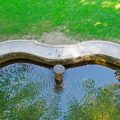Understanding UK Pond Ecology
Ponds are an intrinsic part of the British landscape, acting as vital microhabitats that support a remarkable diversity of wildlife. From the tranquil village duck pond to secluded woodland pools, these water bodies play host to myriad native species such as smooth newts, dragonflies, water voles, and great crested newts—a species protected under UK law. The ecological web within a British pond is complex and finely balanced; aquatic plants oxygenate the water, invertebrates process organic matter, and amphibians rely on these habitats for breeding. The seasonal rhythms of pond life are deeply tied to the UK’s changing weather patterns. Mindful, seasonal care—such as managing plant growth, maintaining water quality, and creating wildlife-friendly refuges—ensures these delicate ecosystems thrive year-round. By understanding the unique features of British ponds and recognising their role in supporting native biodiversity, pond owners can contribute meaningfully to local conservation efforts and sustain wildlife populations for future generations.
Spring Maintenance: A Fresh Start
As the British spring awakens, your garden pond becomes a hub of activity. Early spring is the ideal time to give your pond a thorough check-up while being mindful of emerging wildlife, such as frogs, newts, and dragonfly larvae. A balanced approach ensures that you foster new growth without disrupting delicate habitats.
Debris Removal: Gentle and Thorough
Over winter, leaves and organic matter often accumulate at the bottom of ponds, which can lead to excess nutrients and poor water quality. In early spring, carefully skim the surface with a net to remove floating debris. For sunken material, use a pond vacuum or gently rake out detritus by hand. However, always inspect debris for hibernating creatures before disposal—return any amphibians or insects found back to the pond edge. Avoid disturbing silt too much, as it may house overwintering wildlife.
Checking Water Quality
Maintaining optimal water conditions is crucial for supporting both plant growth and animal health. Test your pond’s pH and ammonia levels using kits available at most garden centres. Aim for a pH between 6.5 and 8.0. If water appears cloudy or green, consider adding barley straw pouches—a natural British solution to discourage algae blooms without harming wildlife.
| Water Parameter | Ideal Range | Action if Out of Range |
|---|---|---|
| pH | 6.5 – 8.0 | Add rainwater (to lower) or limestone chippings (to raise) |
| Ammonia | <0.1 mg/L | Partial water change; reduce feeding fish |
| Nitrate | <40 mg/L | Add oxygenating plants; partial water change |
Encouraging New Growth Safely
Spring is perfect for dividing and replanting marginal plants such as marsh marigold or purple loosestrife, which are native to the UK and excellent for wildlife cover. When planting, leave shallow shelves clear for amphibians to access the water easily. Avoid introducing non-native species that could disrupt the ecosystem.
Sensitive Areas to Protect:
- Pond Edges: These are prime spots for frogspawn—tread lightly to avoid crushing eggs or disturbing nesting birds like moorhens.
- Shallow Zones: Dragonfly nymphs and young newts may be hiding here; avoid excessive raking or digging in these areas.
- Sediment Layers: Many beneficial microorganisms overwinter in the silt—disturb only what’s necessary.
A Seasonal Note on Wildlife Law:
Remember that many British amphibians are protected by law during their breeding season (March–June). Always check local guidance before undertaking major works.

3. Summer Support: Managing Heat and Growth
As British summers grow warmer and daylight hours stretch, your garden pond can become a hub of activity for local amphibians, dragonflies, and birds. However, increased temperatures bring unique challenges that require attentive care to maintain a healthy environment for wildlife.
Top Up Water Levels Mindfully
Evaporation accelerates in summer, especially during heatwaves. Regularly check your pond’s water level and top up with rainwater whenever possible—tap water may contain chemicals that disrupt the delicate balance of your pond’s ecosystem. If you must use tap water, let it stand in a watering can for 24 hours before adding it to the pond, allowing chlorine to dissipate. This simple step helps protect tadpoles, newts, and aquatic insects.
Algae Management Strategies
Warmth and sunlight often trigger rapid algae growth, which can suffocate other pond life by reducing oxygen levels. To manage this naturally, remove excess blanket weed or duckweed by hand using a net or rake; leave removed material beside the pond for a day so any creatures can crawl back into the water. Avoid chemical treatments as these can harm amphibians and beneficial insects. Consider adding native submerged plants such as hornwort or water starwort—they outcompete algae for nutrients and provide essential cover for fish fry and invertebrates.
Creating Shade for Wildlife
Ponds exposed to full sun are prone to overheating and excessive evaporation. Erecting a simple shade structure using willow hurdles or strategically placing tall native plants like yellow flag iris or meadowsweet at the pond’s edge helps moderate water temperature. Overhanging vegetation also offers shelter from predators and cool retreats for frogs, damselflies, and visiting birds.
Support Amphibians During Breeding Season
Summer is a critical time for young amphibians leaving the water. Ensure there are gentle sloping edges or ‘amphibian ladders’ (a series of stones or logs) so tiny frogs and newts can safely exit the pond. Keep grass around the pond long to provide damp cover—this encourages toads and grass snakes too.
Encourage Dragonflies and Birds
Add marginal plants like purple loosestrife or water mint to attract dragonflies looking for egg-laying sites. Place flat stones at the water’s edge for birds to bathe and drink safely; top up bird baths regularly as well, since natural sources may dry up during prolonged spells of hot weather.
By combining these hands-on measures with an understanding of local wildlife needs, your pond will remain a thriving sanctuary throughout the hottest months on the British calendar.
4. Autumn Preparations: Ready for Rest
As the days shorten and the temperature begins its steady descent, autumn signals a crucial phase in seasonal pond care across the UK. This is the time to prepare your pond for winter’s challenges, ensuring that both the water quality and the resident wildlife are protected through the harsher months ahead.
Removing Fallen Leaves
Fallen leaves can quickly accumulate in and around your pond during autumn. If left unchecked, they decompose and contribute to silt build-up, which in turn can lower oxygen levels and disrupt the delicate ecosystem. Regularly skim leaves from the surface with a net and consider installing a fine mesh netting over your pond if nearby trees are particularly prolific.
| Task | Frequency | Tools Needed |
|---|---|---|
| Skim leaves from water | Weekly or as needed | Pond net/skimmer |
| Install/remove pond netting | Start of autumn / after leaf fall ends | Pond cover net, pegs/stakes |
Trimming Vegetation
Certain aquatic and marginal plants benefit from an autumn trim. Cut back dead or dying foliage to prevent decay within the pond, but leave some vegetation at the edges to provide cover for amphibians and insects. Be mindful not to over-tidy, as many creatures rely on natural debris for shelter.
Key Points for Trimming:
- Cut back hardy perennials to a few centimetres above water level.
- Remove floating debris but keep submerged plants largely intact for oxygenation.
- Avoid disturbing established planting too much—balance is key.
Providing Shelter for Overwintering Creatures
The British climate can be unpredictable, with sudden frosts catching even experienced gardeners off guard. As temperatures drop, many pond inhabitants seek safe spots to overwinter. Offer piles of damp leaves or logs near the pond’s edge for frogs, newts, and other amphibians. Leaving some marginal plants untrimmed also creates valuable refuge for insects and larvae.
Shelter Suggestions Table:
| Shelter Type | Target Wildlife | Placement Tips |
|---|---|---|
| Pile of damp leaves/logs | Frogs, newts, hedgehogs | Near pond edge, partially shaded |
| Baskets of stones/gravel underwater | Aquatic insects, young fish | Shallow areas within pond |
| Untrimmed marginal plants | Insects, larvae | Around pond perimeter |
Tending to these tasks during autumn not only keeps your pond healthy but also supports local wildlife through winter—a small effort now ensures a thriving habitat when spring returns.
5. Winter Care: Protecting Wildlife through Frost
When the British winter sets in, ponds face unique challenges that can put local wildlife at risk. As temperatures plummet and frost covers the landscape, it’s essential to adjust your pond care routine to ensure the safety of aquatic inhabitants and visiting creatures.
How to Maintain Healthy Oxygen Levels
Oxygen depletion is a genuine concern during winter, especially when ice forms on the pond surface. To maintain healthy oxygen levels, avoid letting leaves or organic debris accumulate in autumn, as decomposing material reduces oxygen content. Consider installing a small pond aerator or air stone; these devices gently circulate water and increase oxygenation without disturbing overwintering animals. If you use a pump or filter system, check that it is winter-safe and doesn’t freeze solid, as this could harm both equipment and wildlife.
Keep Areas Ice-Free
Allowing your entire pond to freeze over can trap harmful gases underneath the ice and suffocate fish, frogs, and newts. Never smash the ice, as the shock waves can injure or kill pond life. Instead, float a tennis ball or purpose-built pond de-icer on the surface before temperatures drop. Removing the ball periodically creates a breathing hole for gas exchange. Alternatively, gently pour warm (not boiling) water onto one spot to open up an area if freezing has already occurred.
Protecting Pond Inhabitants
Your pond’s residents—like frogs, toads, and insect larvae—often hibernate at the bottom where it’s slightly warmer. Avoid disturbing them with heavy maintenance during winter months. Place bundles of twigs or hollow stems near the water’s edge; these provide shelter for amphibians seeking refuge from frost. If possible, leave some marginal vegetation standing to offer extra cover for birds and small mammals.
British Wildlife Considerations
In UK gardens, ponds are vital for native species’ survival through harsh winters. Birds may visit for drinking water when natural sources freeze, so check edges regularly for accessibility. Hedgehogs and other mammals benefit from nearby leaf piles and log stacks as additional habitat. By adapting your approach each season—especially during frosty spells—you’re playing a key role in supporting Britain’s precious pond ecosystems all year round.
6. Encouraging Biodiversity Year-Round
Supporting a thriving, biodiverse pond ecosystem is an ongoing commitment that brings rich rewards for both wildlife and garden owners. Here are some practical ways to foster biodiversity in your pond throughout the changing British seasons.
Planting Native Species
Selecting native aquatic and marginal plants is vital for encouraging local wildlife. Plants such as water forget-me-not, yellow flag iris, and marsh marigold not only provide shelter and food for insects and amphibians but also blend seamlessly with the surrounding countryside. Native oxygenators like hornwort and water crowfoot will help maintain water quality while offering habitat for invertebrates.
Adding Wildlife Shelters
Install features that offer shelter across the year. Log piles and stone heaps at the pond’s edge can act as refuges for frogs, newts, and hedgehogs. Floating islands or rafts made from natural materials can provide safe resting spots for birds. Consider adding hibernacula—buried piles of logs and leaves—for overwintering amphibians, ensuring they have a safe place during cold snaps.
Creating Diverse Environments
Encourage a variety of habitats within your pond area by incorporating shallow margins, deeper sections, and gently sloping banks. These features cater to different species’ needs across their life cycles. Avoid using chemical treatments or excessive cleaning, as these can disrupt delicate ecological balances and deter beneficial fauna.
Ongoing Habitat Maintenance
Regularly review your planting scheme and habitat structures to ensure they remain suitable as the seasons change. Top up plant stocks with additional native varieties where gaps appear, and replenish log piles with fresh material if needed.
A Community Effort
Finally, share your experiences and successes with neighbours or local wildlife groups; exchanging seeds or tips on wildlife-friendly gardening can help build a network of supportive habitats throughout your area. By nurturing biodiversity all year round, you’ll play a crucial part in safeguarding Britain’s precious pond-dwelling species for generations to come.


